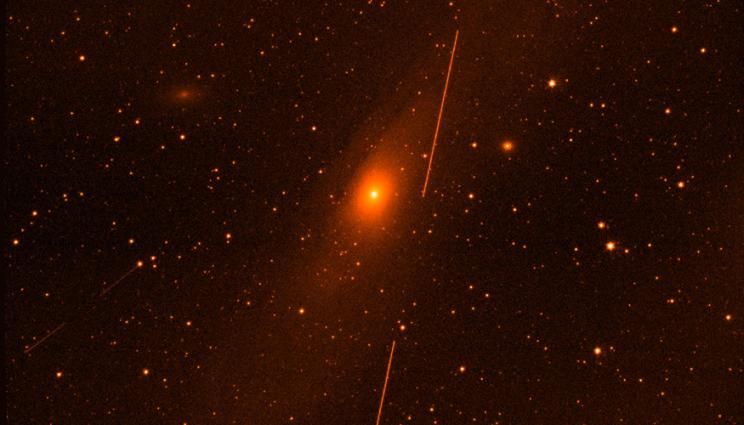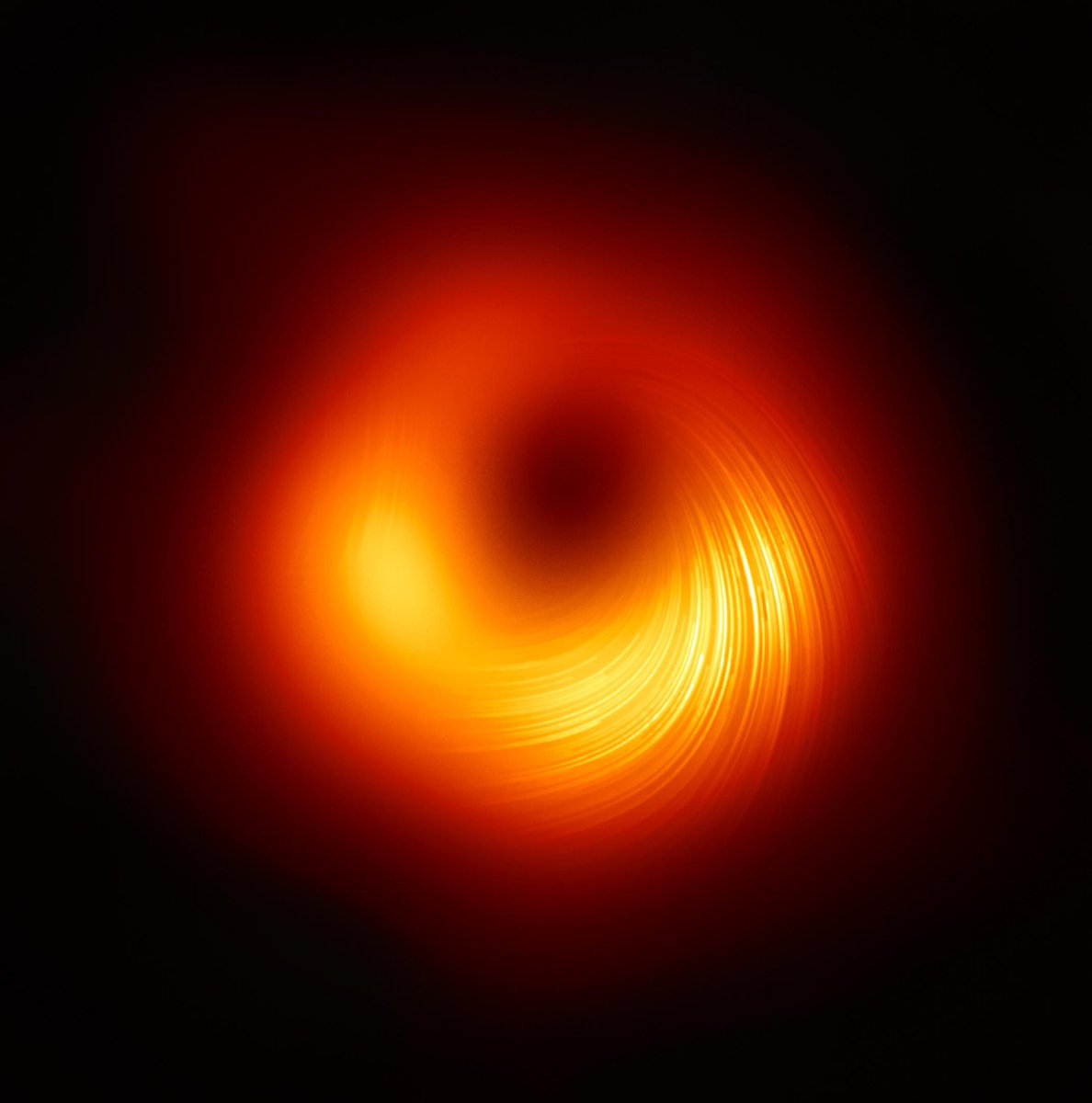One of the hardest things to reconcile in science is when new data either complicates or refutes previously findings. It’s even more difficult when those findings were widely publicized and heralded around the community. But that is how science works – the theories must fit the data. So when a team from JPL analyzed data from Mars Express about the Martian South Pole, they realized the findings announced in 2018 about subsurface lakes on Mars might have been more fraught than they had originally thought.
Continue reading “Potentially More Subsurface Lakes Found on Mars”NASA is Testing out new Composite Materials for Building Lightweight Solar Sail Supports
Space exploration is driven by technology – sometimes literally in the case of propulsion technologies. Solar sails are one of those propulsion technologies that has been getting a lot of attention lately. They have some obvious advantages, such as not requiring fuel, and their ability to last almost indefinitely. But they have some disadvantages too, not the least of which is how difficult they are to deploy in space. Now, a team from NASA’s Langley Research Center has developed a novel time of composite boom that they believe can help solve that weakness of solar sails, and they have a technology demonstration mission coming up next year to prove it.
Continue reading “NASA is Testing out new Composite Materials for Building Lightweight Solar Sail Supports”Astronomers see an Accretion Disk Where Planets are About to Form
Planet formation is notoriously difficult to study. Not only does the process take millions of years, making it impossible to observe in real time, there are myriad factors that play into it, making it difficult to distinguish cause and effect. What we do know is that planets form from features known as protoplanetary disks, which are made up of gas and dust surrounding young stars. And now a team using ALMA have found a star system that has a protoplanetary disk and enough variability to help them nail down some details of how exactly the process of planet formation works.
Continue reading “Astronomers see an Accretion Disk Where Planets are About to Form”A Newly-Discovered (Almost) Dwarf Planet Will Come Surprisingly Close in 2031
It’s good to remember how little we know about the outer solar system. Humans only really began observing it within the past 100 years, and given the constraints on that observations there are still plenty of things we don’t know about. For example, researchers recently found an object almost the size of a dwarf planet that is inbound to the inner solar system, with an estimated orbital period of over 2 million years, more than six the lifetime of the modern human species.
Continue reading “A Newly-Discovered (Almost) Dwarf Planet Will Come Surprisingly Close in 2031”NASA is Finally Sending a Lunar Lander to the Moon’s far Side
The far side of the moon has been getting more popular than a Pink Floyd album lately. A variety of missions are planned to visit the previously overlooked side opposite Earth. Recently NASA announced a few more, including two landers which will measure properties of the Moon’s interior.
Continue reading “NASA is Finally Sending a Lunar Lander to the Moon’s far Side”Astrobiologists Detect a Signature of Life Remotely. Don’t get too Excited, Though, it was With a Helicopter Here on Earth
Chirality is a word normally found in biological textbooks that will occasionally pop up in the astronomy community, usually when discussing potential biosignatures. Typically the term is explained by analogy with left and right hands – how the molecules are curved in one specific way or another, similarly to how human hands are formed either as left or right. These two curvatures of the molecules are mirror images of each other, but not exactly the same. Until recently, detection of chirality has focused on in situ measurements, such as those on Mars where molecules can be sampled directly. Now, however, a team led by Drs. Lucas Patty and Jonas Kühn at the University of Bern, has managed to detect chirality remotely using some impressive new technology.
Continue reading “Astrobiologists Detect a Signature of Life Remotely. Don’t get too Excited, Though, it was With a Helicopter Here on Earth”Teeny Tiny Space Telescope has Taken Thousands of Pictures of Both Earth and Space
A new nanosat has been quietly snapping over 4500 pictures of the Earth and the sky after its launch on May 15th. Rocketed into orbit on a Falcon 9, the nanosat, known as GEOStare2, actually contains two different telescopes – one focuses on a wide field of view while the other has a much narrower field of view but much higher resolution. Together they aim to provide data on Earth, the stars, and the network of satellites in between.
Continue reading “Teeny Tiny Space Telescope has Taken Thousands of Pictures of Both Earth and Space”Space Telescopes Could Provide Next-Level Images of Black Hole Event Horizons
Back in 2019, the world was treated to the first ever image of a black hole, which was originally captured in 2017. The feat was widely heralded as a leap forward for astrophysics, supporting Einstein’s Theory of Relativity. Now a team led by the Radboud University proposes sending instruments into space to estimate black hole parameters more accurately by an order of magnitude. The newest paper, led by Dr. Volodymyr Kudriashov, translates science goals into technical requirements and focuses on the instrumentation needed for the Event Horizon Imager, as the mission is called.
Continue reading “Space Telescopes Could Provide Next-Level Images of Black Hole Event Horizons”Astronomers saw the Same Supernova Three Times Thanks to Gravitational Lensing. And in Twenty Years They Think They’ll see it one More Time
It is hard for humans to wrap their heads around the fact that there are galaxies so far away that the light coming from them can be warped in a way that they actually experience a type of time delay. But that is exactly what is happening with extreme forms of gravitational lensing, such as those that give us the beautiful images of Einstein rings. In fact, the time dilation around some of these galaxies can be so extreme that the light from a single event, such as a supernova, can actually show up on Earth at dramatically different times. That is exactly what a team led by Dr. Steven Rodney at the University of South Carolina and Dr. Gabriel Brammer of the University of Copenhagen has found. Except three copies of this supernova have already appeared – and the team thinks it will show up again one more time, 20 years from now.
Continue reading “Astronomers saw the Same Supernova Three Times Thanks to Gravitational Lensing. And in Twenty Years They Think They’ll see it one More Time”Astronomers Find a Blinking Star Near the Center of the Milky Way
In this week’s edition of new unexplained astronomical phenomena, a team of astronomers led by Dr. Leigh Smith from Cambridge found a star 100 times larger than our sun that nearly disappears from the sky every few decades. They also have no idea why it does so.
Continue reading “Astronomers Find a Blinking Star Near the Center of the Milky Way”









